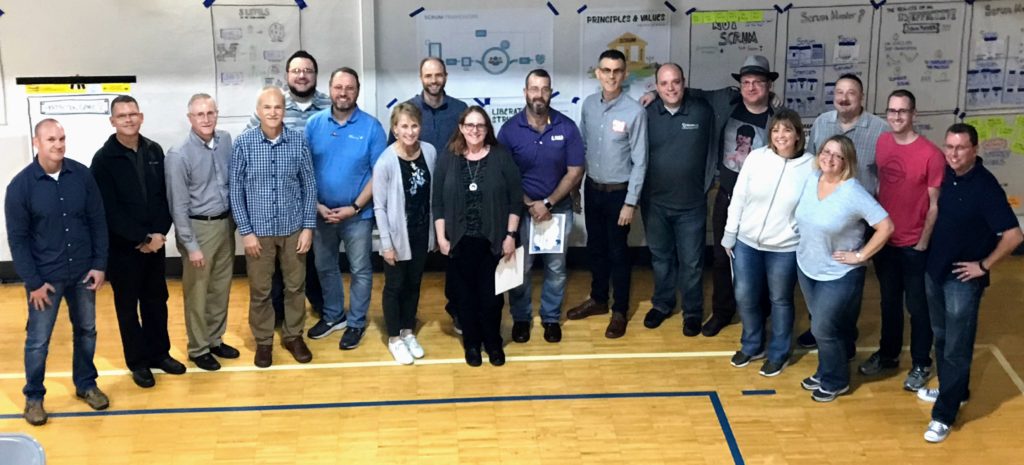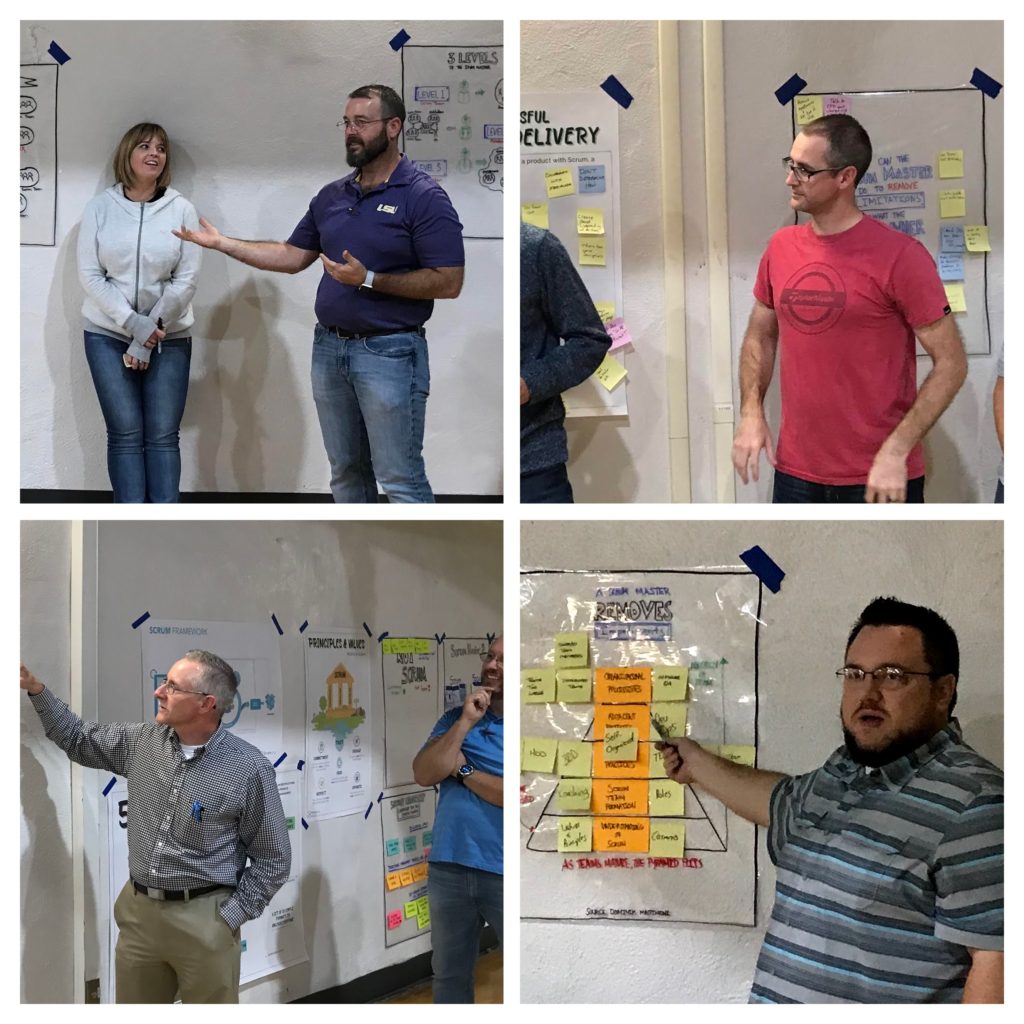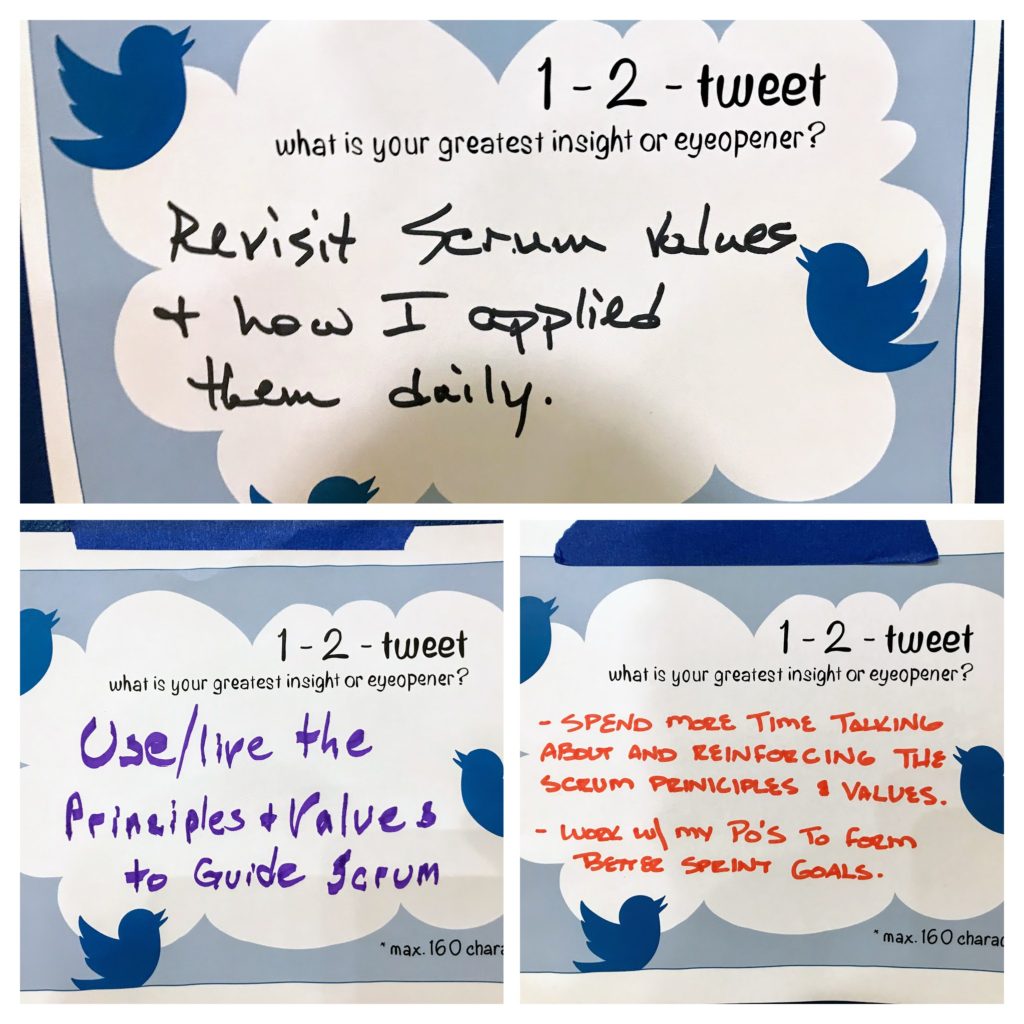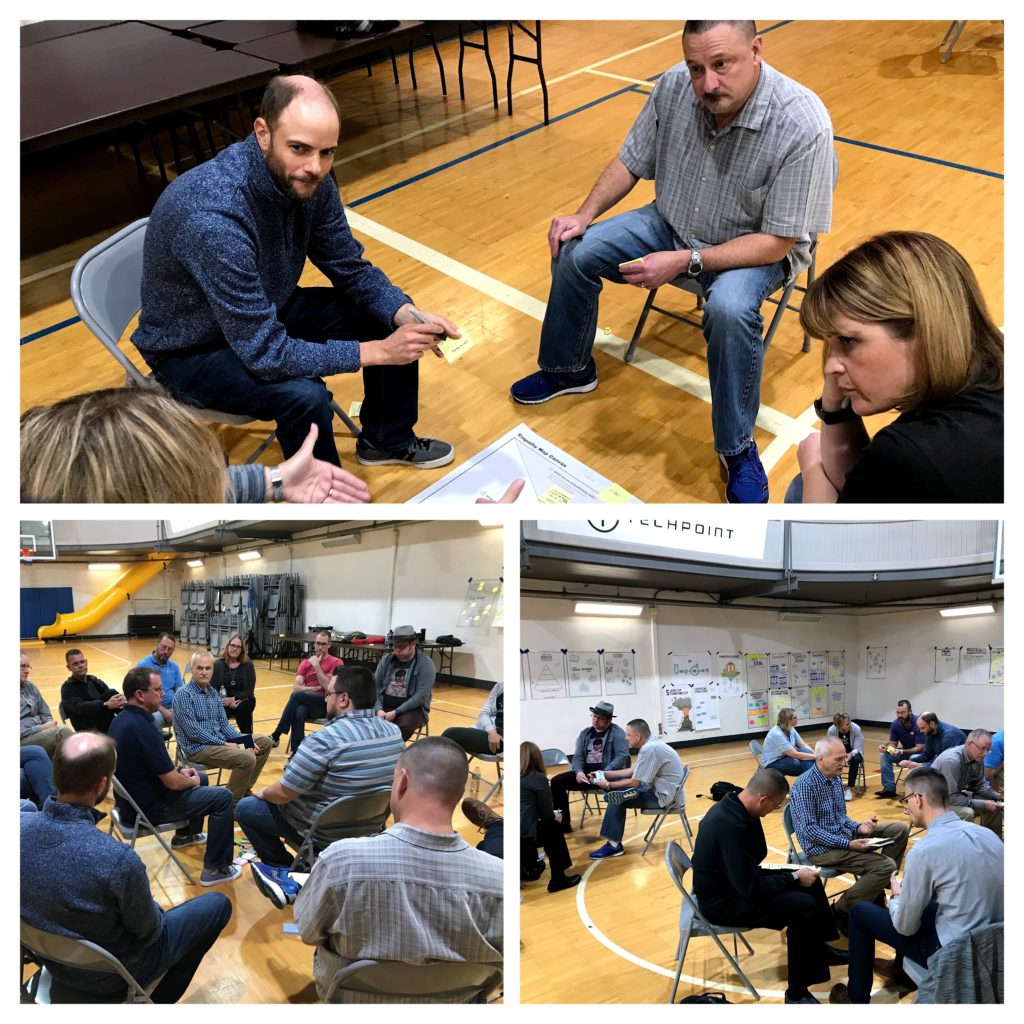Last week I co-taught scrum.org's new Professional Scrum Master II course with fellow Professional Scrum Trainer (PST) Todd Miller. This 2-day advanced Scrum Master class is designed to be the next step that a Scrum Master takes on their journey towards Professional Scrum.

We had a wonderful mix of students with varying levels of experience and past certifications. Our focus over the two days was to deep dive the servant leadership aspects of the Scrum Master role by exploring how a Scrum Master serves the Development Team, the Product Owner, and the organization. Empiricism and the Scrum Values were used as guide posts along the way as the situations increased in complexity.
Our 16 students did an amazing job at not only learning more about the Scrum Master role, but also taught Todd and I quite a lot about co-teaching and facilitation.
In fact, here are 5 things that really stood out from co-teaching the Advanced Scrum Master (PSM II) course:
#1 - Transparency When Co-Teaching is Essential
The night before the class started, Todd and I decided that any discussion about the course or any changes that we wanted to make during the day would be discussed openly and in front of the students. We were not sure how this would work out, but by the end of day one people were really enjoying the level of openness that we displayed when we were not sure what to do next.
We were at times vulnerable and often used these moments to inject some humor in to the course. Todd and I both noted that by the end of day 2 our running dialogue had become an organic part of the course that helped level set expectations for the students and also helped us more naturally co-facilitate the activities. This was a fun experiment that Todd and I will continue in future courses.
#2 - Liberating Structures Are Amazing
If you aren't using liberating structures in your Scrum practice today, you will be by the end of a PSM II course. Liberating Structures are 33 micro-structures that are easy to use and understand by groups of any size. These structures are created and maintained by Keith McCandless and Henri Leipmanowicz. I was amazed by both the simplicity and power of Liberating Structures.
Some things that I noticed immediately:
- Every participant was actively engaged during the entire course. Introverts, extroverts and everyone in-between were able to participate, share, and have their voices heard.
- By using Liberating Structures we unlock the wisdom of the crowd and unleash ideas that the entire group can learn from and build upon.
- Sharing is caring and when we care about each other we also tend to trust one another. This high level of trust in the group made complex discussions possible.
- The intelligence of the room was not limited by the trainers. Everyone contributed to the group leveling up their Scrum Master skills.
Liberating Structures were simple enough for both Todd and I and the students to adopt and learn quickly, while leaving room for discovery and innovation. Ideas, patterns, and insights emerged over time by the students. The participants created the opportunities for their own discoveries within the Liberating Structures. These insights are far more meaningful than anything that I could have read off of a PowerPoint slide.

Here are some great resources if you want to learn more about Liberating Structures:
- Liberating Structures Website
- Creating a New Learning Experience with the PSM II Class
- Liberating Structures: Unleash and Involve Everyone
#3 - Students Have a Lot to Teach One Another
As it turns out, we can all help each other learn. Day 2 of the PSM II course involves an activity where the students break in to groups and create a 2-minute "teach back" where they help the entire class learn about an aspect of being a Scrum Master. Our students took the learning and outcomes from day 1 and combined them with their own experiences to create some really interesting teaching moments for the class. Having the students teach these concepts back to the group turned out to be far more powerful than either of us initially expected.

#4 - Trainers Must Also Inspect and Adapt
The Advanced Scrum Master (PSM II) course is difficult to teach. We are leaving a lot of space for emergence and exploration by using Liberating Structures, Training from the Back of the Room, and Learning 3.0 concepts. This means that as trainers we will have many decision points and options along the way. When Todd and I noticed that the Scrum Values were not well known by this group of students, we spent more time on this topic than planned. But we needed to make this important choice. Empiricism and the Scrum Values are the underpinnings of Scrum. Without them, you get mechanical/zombie/bad scrum.
This insight and subsequent discussions led us to discover an adaptation to the course flow that we are going to try out in our upcoming PSM II course in Denver, Colorado. The time invested on the Scrum Values ended up being time very well spent:

#5 - Watching a Mindset Shift is Powerful
We had a student approach us the morning of day 2 with his notebook open and a wide grin on his face. Our student was excited about an insight about the Sprint Goal and completely revamped the agenda of an upcoming Sprint Planning event.
Here's what he told us:
I couldn't sleep after I got home from day one of the class. I realized that I had to completely change our Sprint Planning agenda. We need a true Sprint Goal that we all understand and can stay aligned with during the Daily Scrum.
We had another student express gratitude for helping her understand what "done" really means and the implications of what is both in and out of their definition of done. Another student went home after the end of the class and immediately started work on a Sprint Retrospective format that reinforces the Scrum Values.
These are some of the concrete changes that we heard about during and after the class. What we also saw during the class was real servant leadership emerge. The students were helping each other by sharing their stories, committing to helping each other going forward, and by showing high amounts of grace, trust, and comfort with people they had just met. This subtle, yet powerful shift in mindset and approach by the students was a joy to watch unfold.

The PSM II course is an advanced scrum master journey designed to help practicing Scrum Masters experience a facilitated course. Empiricism, the scrum values, and servant leadership are at the core of this advanced scrum master course.
Servant leaders tap in to the collective intelligence of their teams and help people grow, thrive, and prosper. These leaders help people see a version of better in the world that other many not even realize is possible. These students now have new ideas and tools to help them do just that.
If you'd like to grow your scrum mastery and take the next step on your servant leadership journey, you can join Todd and I at one of the classes below. We hope you can join us!
